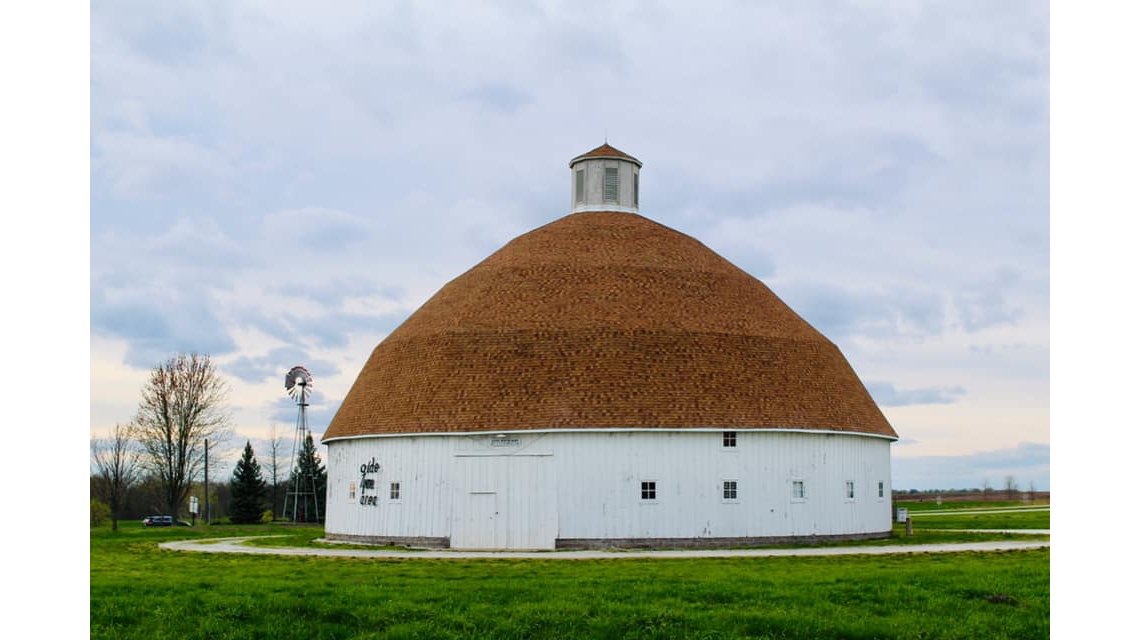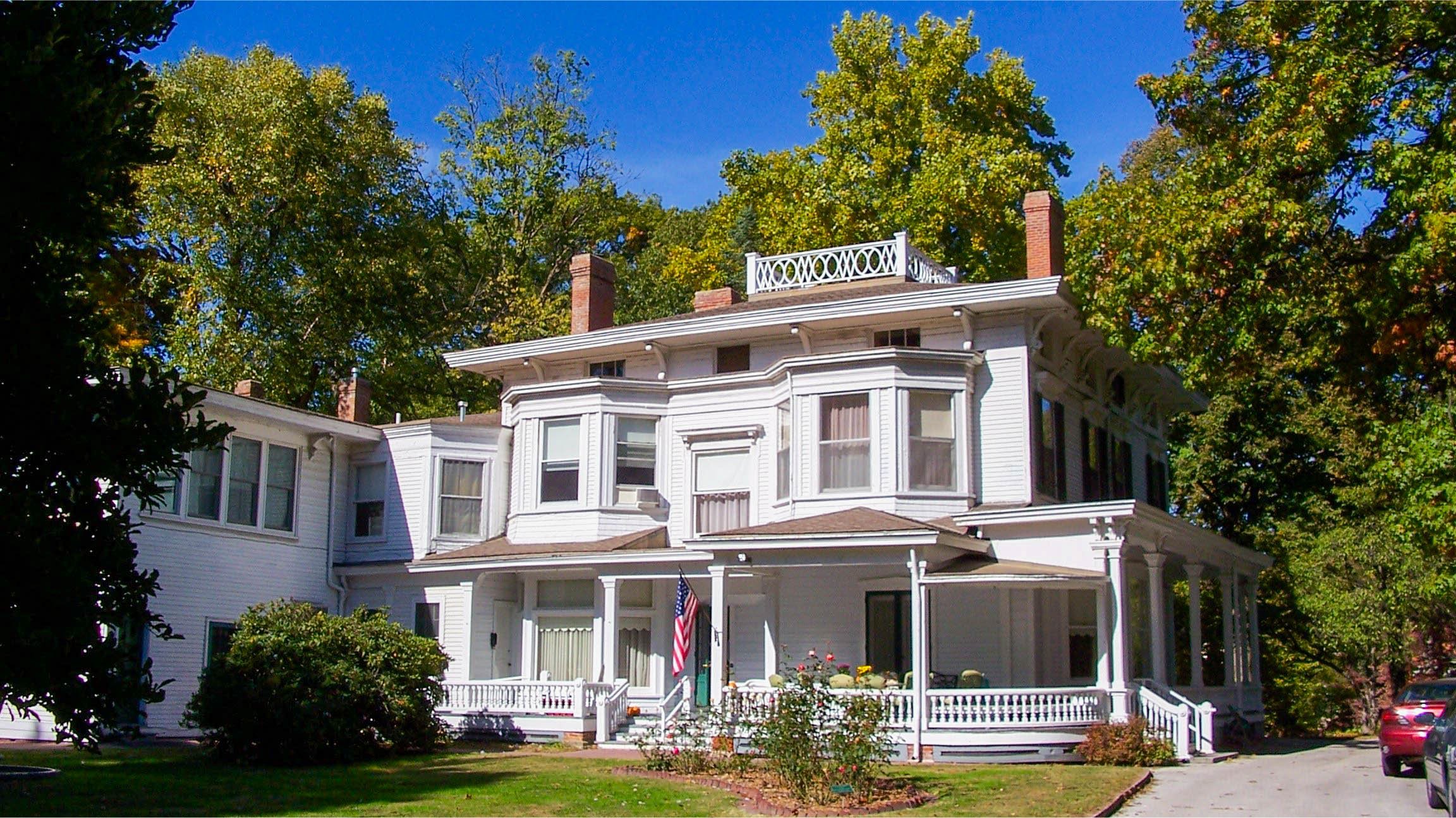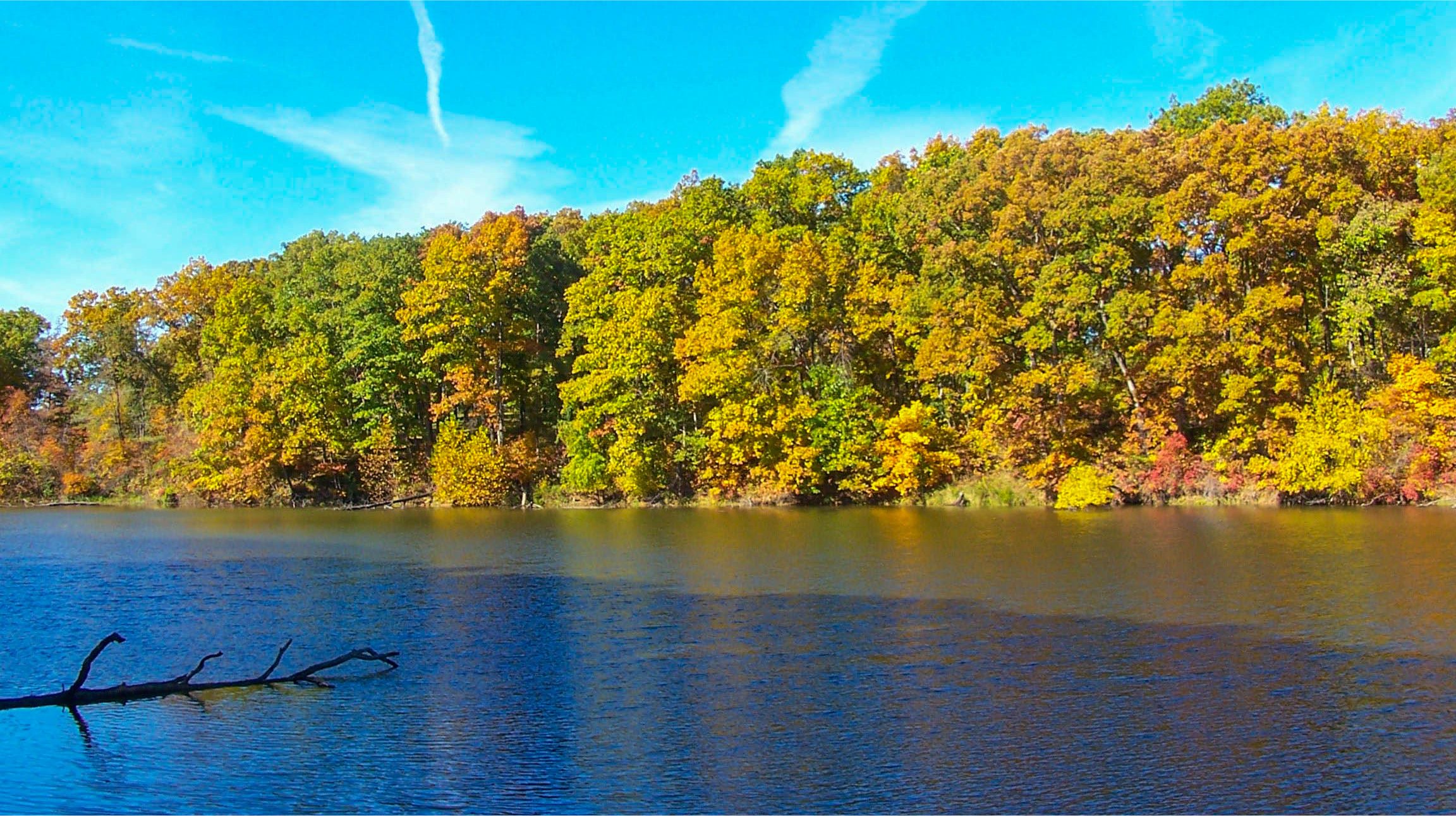Visitors Guide to Attractions
Adams County, Illinois
Quincy is the main attraction in Adams County. This city that sits on the bluffs overlooking the Mississippi River is home to a number of interesting places to visit. The Dr. Richard Eells House is recognized by the National Parks Service as an important Underground Railroad site. The John Wood Mansion is the restored home of Quincy’s founder and the twelfth Governor of Illinois, John Wood. Indian Mounds Park is one of the few places in the state where visitors can view Native American mounds. Quincy Museum in the Newcomb-Stillwell Mansion is home to exhibits on the Victorian era, Native American artifact exhibits, and a dinosaur exhibit. The Villa Kathrine is a unique example of Mediterranean architecture in the Midwest. and is home to the Quincy’s Tourist Information Center, a convenient first stop for visitors to Quincy. Rural Adams County features the Golden Windmill, the only smock mill with its original stones and gears in Illinois, and the 3,323-acre Siloam Springs Park.
Page 1 of 2
Free Museum Passport
Quincy, IL
Visitors to Quincy can now obtain a complimentary Museum Passport that is good for a buy one get one free admission for adults to explore ten of Quincy's notable museums. The passport is compliments of the Quincy Area Convention & Visitors Bureau and The Great River Economic Development Foundation and is can be obtained by visiting the Villa Kathrine or by calling the Quincy Area Convention & Visitors Bureau at 217-214-3700 or 1-800-978-4748 and requesting it by mail with their visitors information package.
1930’s Preserving Agriculture Museum
Quincy, IL
The Preserving Agriculture History Museum showcases John Deere agriculture machinery that would be found in a typical 80-120 acre farm in the Midwest during the 1930’s. It also includes many of the things that would be found in a typical 1930’s farmhouse. This museum is free and open to groups. Open by appointment only.
Dr. Richard Eells House
Quincy, IL
The Dr. Richard Eells House was a part of the Underground Railroad. The home is the oldest standing two-story brick house in Quincy. In the 1840’s the house was a stopping point on the Underground Railroad, as escaping slaves made their way north to freedom. Dr. Eells is credited with helping several hundred slaves escape through the Underground Railroad.
Golden Windmill
Golden, IL
The Prairie Mills Windmill was built in 1872 and is the only smock mill that still has the original stones and gears in place. Today, the Golden Windmill is owned by the Golden Historic District and is home to the Windmill Museum and Gift Shop.
Illinois Veteran’s Home & All Wars Museum
Quincy, IL
The Illinois Veteran’s Home of Quincy is one of our nation’s largest and oldest veterans home. The facility is often called "the city within the city" because of its size and unique set up and is composed of over 25 buildings on 210 beautiful acres on the northern edge of Quincy The site houses the All Wars Museum, which has exhibits spanning from the American Revolution through today's conflicts. The grounds also feature deer and buffalo parks.
Indian Mounds Park
Quincy, IL
Indian Mounds Park is one of the few places in the state where visitors can view Native American mounds. The park features a walking time line that introduces you to the history of the people who built the mounds. In 2003, Indian Mounds Pool reopened after reconstruction. The pool is heated and features waterslides, diving boards, geysers, and a food court.
Lewis Round Barn Museum
Mendon, IL
Built in 1914 and donated to the Adams County Olde Tyme Association, the round barn was moved to its current site in 2000. Local Amish helped disassemble and rebuild the barn. The structure is 80 feet in diameter 80 feet in diameter with a 40-foot silo in the center. The museum exhibits antique machinery and household items from 20th-century farms and is open to the public during the Adams County Fair each year or by appointment. Nearby are a restored one room school house and log cabin.
Lock and Dam No. 21
Quincy, IL
Listed on the National Register of Historic Places construction of the lock and dam began in 1933 and became operational in July 1938. The dam portion of the structure is 1,265 feet long and consists of 3 roller gates and 10 tainter gates. Many endangered bald eagles establish their winter home in the trees along Lock and Dam 21.
Mississippi Valley Antique Auto Museum
Quincy, IL
A sheer delight for auto buffs everywhere, this antique car museum houses over 30 antique cars and related displays. It is located in All America Park, on the approach to Quinsippi Island. Enjoy the annual car show held at the museum each June around Father’s Day.
Quincy Art Center
Quincy, IL
The Quincy Art Center, a museum of the visual arts, was started in 1923 and is located on the grounds of the former Lorenzo Bull mansion, now the Women’s City Club. In 1990 an award-winning addition was opened with galleries and a gift shop with studio space in the lower level. A variety of rotating exhibitions are presented throughout the year. Important contemporary Midwestern art is a primary focus, and work by artists of national and international renown are also featured.
Explore Page 2 of Adams County Attractions
Nearby Attractions
Lee County, Iowa
There is a wide range of attractions for visitors to Lee County, ranging from historical sites such as Old Fort Madison and the George M. Verity River Museum to the scenic views atop the bluffs of Rand Park. For those interested in Mormon history, Lee County is the beginning of the Iowa Leg of the Mormon Pioneer National Historic Trail and has a number of interpretive exhibits throughout the county.
Hancock County, Illinois
Hancock County is rich in history and offers other types of attractions as well. Today Hancock County is most known for its Mormon history. This era of life in Hancock County can be fully explored by visiting sites such as the Historic Nauvoo Visitor’s Center, the Family Living Center, and the Carthage Jail. Other aspects of Hancock County’s history can be found at the Weld House Museum, the Rheinberger Museum, and the Kibbe Hancock Heritage Museum. The natural beauty of Hancock County can be seen at Nauvoo State Park and the Weinberg-King State Fish and Wildlife Area.
Pike County, Illinois
Abraham Lincoln spent a good deal of time in Pike County prior to his election as President. There are probably more houses associated with Lincoln in Pittsfield that any other city in the state and the city has put together a unique Talking Houses of homes and sites associated with him. There are also a number of small historical museums that preserve the heritage of the small rural communities of the county. Lake Pittsfield offers a wide variety of activities such as boating, fishing, picnicking, camping, and the park hiking and biking trails.
Lewis & Clark Counties, Missouri
Lewis and Clark counties offer a variety of attractions for visitors. History can be taken in at both the Iliniwek Village State Historic Site, where a pre-European Native American village is interpreted, or at the Battle of Athens State Historic Site, the site of a Civil War battle and a site of a 19th century settlement. The Battle of Athens site also provides activities where visitors can engage with nature as well as camping opportunities. Wakonda State Park offers similar nature and camping opportunities.
For Travelers Down the River
Missouri's Lincoln Hills
The Lincoln Hills region of Missouri north of St. Louis is often called the Northern Ozarks. In the north is Hannibal, which conjures up images of the steamboat era and has become virtually synonymous with Mark Twain, Tom Sawyer, and Huck Finn. South of Hannibal is the Little Dixie Scenic Byway that travels atop limestone bluffs and through the real river towns of Clarksville and Louisiana. At the foot of the Lincoln Hills in Lincoln County is Cuivre River State Park, one of Missouri's largest and most rugged.
Meeting of the Great Rivers Scenic Byway
The Meeting of the Great Rivers Scenic Byway area is one of America’s newer scenic byways. With over 20,000 acres of forest and wetlands at the heart of the Mississippi Flyway, it is a nature lovers paradise. Visitors will find spectacular colors in the fall and bald eagles in the winter. History abounds in the region ranging from the prehistoric Cahokia Mounds to sites on the National Register of Historic Places.



























